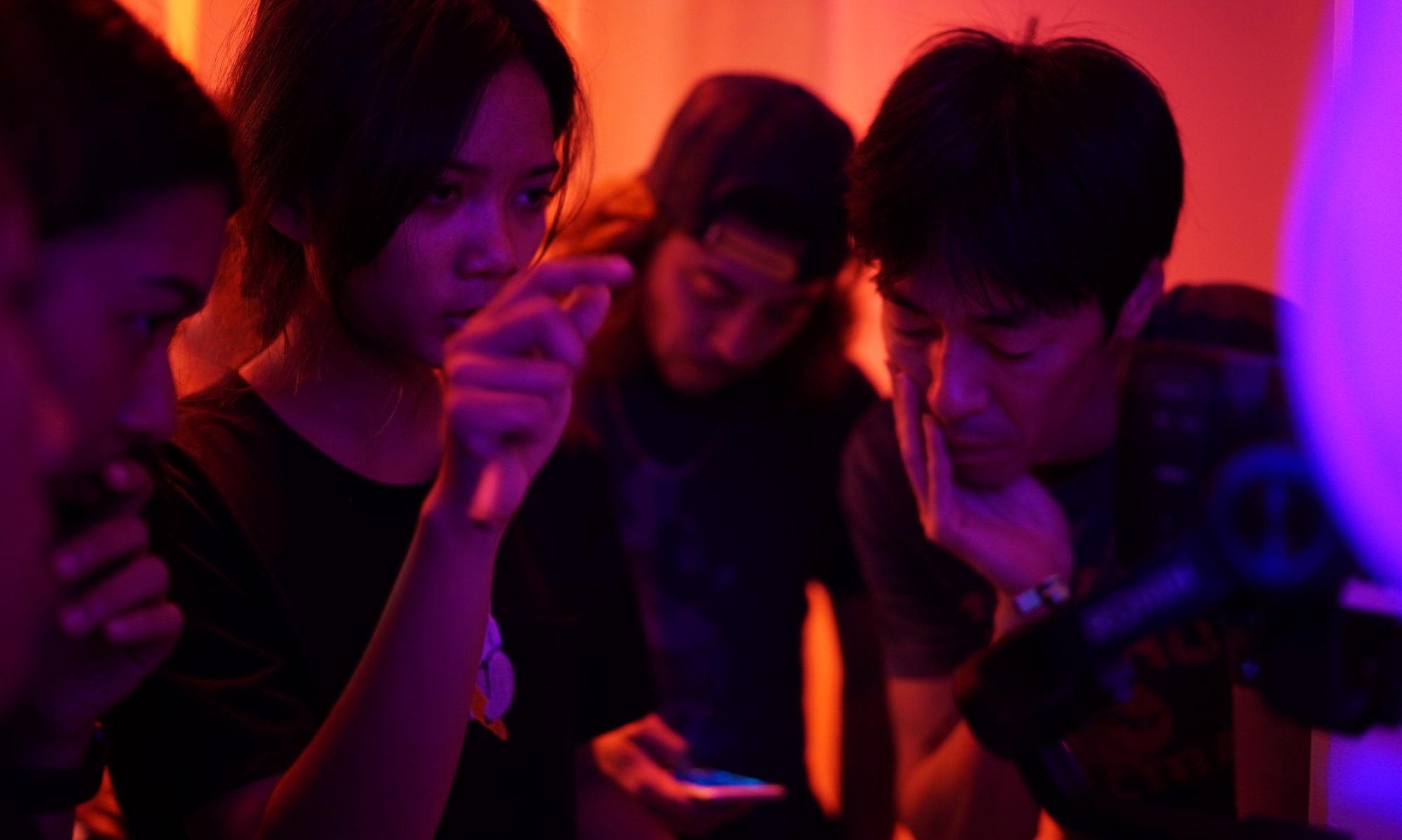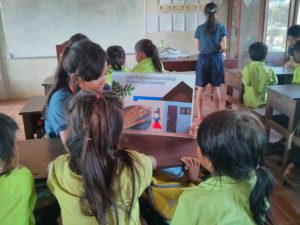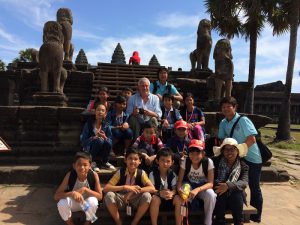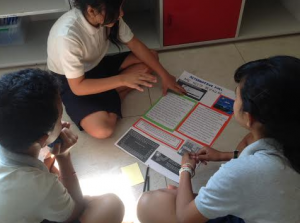Cambodia is my country. I want to develop it a lot. Now I am the kids it really hard for me if I want to change some thing. So now I have many different knowledge that can be my foundation for me. So at the future I can use them to change my country and my self future. At Liger I learned many different subjects. But the most that I interested at them are: Forest Ecology, Public Relation and Architecture. These three things make me so excited a lot because in Forest Ecology I had the chance to went to the forest to have a looked at Cambodia forest and knew about the problem that Cambodia had now. This make me want to protect that forest and animals a lot so when I grow up I also can use my knowledge in this exploration and aother extra study to help my self understand more about that. So at the future it also can be my job too. It make the positive thing because I got the more ideas to help change Cambodia. Other thing was Architecture that I can draw the floor plan of the house and side view. I can make the different for Cambodia because it not easy for the students like my old in Cambodia that have the chance to learned about that liek this. So I really happy because I can learned many knowledge that my young in here not have the chance to do. The last thing was Public Relation the different that I made in that was I can shared my knowledge to the other students that not very good at that. So if I don’t know they teach me and if I don’t know they teach me. Anther thing is it make the different between my old school and here. At my old school everyone alway chasing each other to get the best by them self not like in here is to teach each other. But we both had the same goal was to change Cambodia to get the bright future.
Water Safety Description
Name of course: Water Safety
Learning Facilitator: Max
Number of students: 10
Dates: 4/27 to 6/15
Course Description:
Water Safety was such a busy Exploration for me. Our group had one big intention, is to reduce drowning in Cambodia. We had learned from data that was researched by UNICEF and UNICEF is an agency of the United Nations that works in Cambodia to help protect rights for children. This organization had found out that drowning is the number of people cause of death in Cambodia. In average when they compare males and females together they found out that the amount of males who died from drowning is more than females. The things that cause kids to drown the most are playing/swimming in the water. Also, the really awful thing is that kids die every four hours from drowning and the estimation for one year is 2090 kids in Cambodia. After we learned all of this data we did some research on the internet to check out if this information that we had is right or wrong. Besides that, we went on an overnight trip to an organization called Camkids. We prepared some questions to ask them because we wanted to make sure that the data that we looked at is the right one that we could learn from, so some of the data that we found at Camkids matched with what we had learned in class. To reduce drowning in Cambodia, our group created the swimming lessons for seven weeks. We invited kids from our nearby community to come over to our school and our intention was to help reduce drowning as I had mentioned at the top and we did reached our intention because after the community kids learned the swimming lessons they were pretty good at it.
Forest Ecology Description
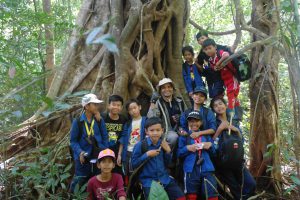
Exploration Name: Forest Ecology
Exploration Dates: Oct 7th – Nov 19th
Number of students: 12
Essential Questions:
(1) What is an ecosystem?
(2) What is a natural resource?
Description: An ecosystem is the living things and the non-living things connecting with each other. The one example is algae. Algae take the sunlight for food and fish eat algae and then people eat fish. This is one connection. In Ecosystems class we had a journey book to take notes or write keywords that we don’t know what that word means. In Ecology class the first topic that we learned was tropical forest. We did not just learn only tropical forests but we also learned a lot of kinds of forests like conifers and others. A tropical forest is the forest that has rain a lot all year. We also learned about ecological relationships. Ecological relationships mean that one organism and another organism connect with each other. Ecological relationships are divided in five parts. They are parasitism, commensalism, predator-prey, mutualism and competition. Our Ecology group went to Mondulkiri province to study there. We spent six days at Mondolkiri. We met a lot of people like Bunong people. On Saturday we came back to our school and we shared what we learned.
Visit our blog: https://ligerforestecology.wordpress.com/
Algebra A Description
Learning Facilitator: Jeff Boucher
Number of Students: 14
Dates: August 12 – January 16
Days we Meet: Monday – Tuesday
Course Description: In our Advanced Enrichment we learned about Math. This Advanced Enrichment lasted really long and the students had a really hard time working on that. We learned the hard math by learning it step by step. There are many clever students in this class and all of them are very patient. Every day in our class the math got harder and harder but we got smarter as the time kept going. Sometimes we realized that the math that we had learned could be used in real life. The important things that we learned for the whole year were negative numbers, the Greatest Common Factors, linear equations, y=mx+b form or Slope-interception, parabolas, Quadratic formula/equation, etc. All of these math sections were very hard. It is something that people will think that it is hard because they did not try yet and for those people who try they will think it is easy. But for us here we do not think it was hard or easy we were just trying our best.
Infographics Description
Advanced Enrichment Name: Infographics 1
Learning Facilitator: Jessica
Number of Students: 13
Advanced Enrichment Dates: August 12-Oct 17
Days We Meet: Thursday and Friday
Course Description: In Infographics class we learned about what does infographics mean. Infographics means the way showing information as a chart or diagram. In Infographics we learned to look at the pictures to understand the information and we were so excited to get a chance to looked at an infographic because it was our first time to look at infographics by our own. When we first looked at infographic we got a little confused but the strategies are sometimes to look at the arrow. Infographics might have a lot of pictures but some don’t have a lot of pictures. The pictures that we looked at were about the Earth like when the animals die and decompose and become gasoline or gold. We even looked at infographics about acid rain. At the end of our Advanced Enrichment we made our own infographic about Liger as the same as 100 people. We made our own infographic because we wanted other students and visitors to get some information from our infographic.
Public Relations(PR) Description
Exploration Name: Public Relations (PR)
Exploration Dates: March 10th-May 2nd, 2014
Number of students: 8
Essential Questions/ Areas:
1. Literacy Coaching
2. Presentation Skills
3. Global Connections
Description:
In our Exploration class, we had three things to work on. The first area was global connections. Global connections mean that we share what we do at Liger with people around the world by using Facebook, Instagram, Youtube and blog. The first thing we used is Instagram because we can post the picture and caption to show what we do at Liger. The second area we practiced was literacy coaching. Literacy coaching is about teaching other students about literacy. This means when students need help to edit a blog or presentation we help them edit and give them some feedback or advice.The last is Presentation skills. The presentation skills we learned about are stance, eye contact, fidget, speed, and volume. Our goal was to share Liger to the world, have more people come to our Exploration Celebration and get more followers on Instagram.
Refuse Plastic Description
Exploration Name: Refuse Plastic
Name of Facilitator: Max
Number of students:12
In our Refuse Plastic group we have learned many thing about plastics. To know about the plastics the first day we came to class we did the experiment with our self. That experiment was to carry the big plastics bag around for one week to know how much plastics that we made. Then after one week we came together at put all the plastics into a big pile and see how much that we made. We found out that all of us made 192 gram in one week. It was a lot because we had 13 people in our group and the plastics was not so heavy so we could say that is was a lot. We found out what is the problem that plastics can make to people that use them. We knew the problem that the plastics make is after people use the plastics they just throw them away because the plastics is easy to get and it cheap for them. Other reason was people have no ideas to make the plastics become the reuseable things. So when people don’t have an ideas about the plastics like this the strategy that they would do was burn, bury, throw them away and use the rubbish truck. All of these things are not so good because if we burn it will make the pollution. The problem would be have the climate change, acid rain, make people sick, make the world hot and if we burn at some place like near the road or some thing so it can make the traffic accident because when the people ride on the road they can’t see because of the smoke. If people bury them it will be bad for soil so we can’t grow the plants ,the chemical come out from the plastics and they go to the plants. Other thing was throw the plastics it still not good for the soil and some time when the animals eat them they can make the animals die and it taking along time to melt so that would be bad for environment too. They are also smelly and bad for our health. The last thing was rubbish truck we use them to take our rubbish away but it just good for your place but they still put them in the landfill so they would need the place to put all the rubbish that collect every day. So if we don’t want that problem to have so we have to use the less plastics and if you can’t do that just use the bag that make out of the fabric or the eco friendly bags. But if you still use so just take them to make something new if you can or use them again and again a lot of times as you can. These what I learned from this exploration. To know more about the plastics we went on the trip to BKK market and City Mall market. We went there to survey some of the sellers and the customers. When we went to BKK we saw that when they place use the plastics was they use less packaging and they sell the thing in the open place and at the City Mall we saw all nearly all the thing were packaging by plastic. We thought we want to use less plastic so we use less packaging but we have to thing for our health. Between both or them which one was the best. But at BKK market was not too bad because the thing put in open place but there is no flies flying around. So it up on the customer to be decide by their self about if you care about you health and want to use less plastics. After that we went to CINTRI is the place that help collect the rubbish. So we went there to learned about the plastics. The other places that we went was the community and we asked some questions to the villagers and they all said the strategy that they use for their plastics after they don’t need to use them more so they just take them to throw and burn was the most thing with out of think about what problem going to happen for them at the future. For us after we collected the data we tried to think the strategy to reduce the plastic so we made the things out of the plastics that we don’t need to use them anymore.
Angkor Architecture Description
Exploration Name: Khmer Architecture
Exploration Date: November 20-January 17
Number of students: 12
Essential Questions/areas:
(1) What is the meaning of architecture?
(2) What information should I know about architecture?
(3) What does Khmer architecture look like?
(4) What are the differences between ancient and modern architecture?
(5) How do we create architecture?
Description:
Architecture is the process of planning, designing and constructing. When we work on architecture with these three things we have to think about durability, utility, and beauty. So in our Exploration we learned about architecture in Cambodia. For example: in Cambodia there are many houses, buildings and also the temples. The Khmer architecture was different than the other countries because like the Angkor Wat is made from the big rocks and the foundation that they built is layers of rocks and sand. But in the other countries, like in the U.S.A, there are not really the buildings that have the foundation like that. Before, the buildings in Cambodia were not that big. The houses were also not that big and were not made from cement like right now. Now when they make the houses, they put many colors and many styles that they want. But at the past, the Khmer buildings were not too big and did not have many styles like now. Just the temples had many styles that Khmer ancestors made by hand with the big rocks. On the big rocks they made the big sculptures that showed about Khmer history. To do the architecture we have to follow the theory of architecture and do it step by step. In this group we went on the trip to Siem Reap to learn how did the Khmer ancestors built the temples. Other than that we also went to some places in Phnom Penh. We went to Central Market, Olympic Stadium and PPIT. That is the school that teaches about the architecture.
For more information:
Water Description
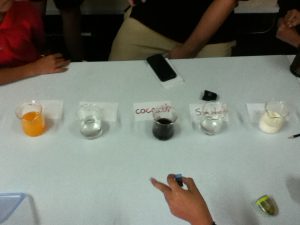
Exploration Name: Liger Water System
Exploration Dates: August 12 – September 26
Number of Students: 12
Description:
In our water group we learned about the pH of water. The full words of pH is Percent Hydrogen. That is the kind of scale that people use to measure the acids and bases. The scale of pH is 0-14. From 0-7 is acidic, 7-14 is basic and 7 is neutral. The hydrogen (H+) is acid and hydroxide (OH-) is base. When we learned about pH we did the experiment with 13 liquid things. For ex: the coca-cola and pond water. The coca-cola was 2.0 so it means acidic. If we drink it a lot like every day we would get sick but if we drink in 1 week only 1 it will be good. The pond was 10.0 so it means basic and if it has a lot of basic like this it also not good for our health either. So we can eat or drink only higher than 7 to 9 or lower than 7 to 5, so it not really have many bases or acids. In this class we also studied about algae. Algae is the kind of plants that live in water and it uses the sun as it food. When this plant lives in water it will make water become basic. We studied our own pond at Liger to learn about this. One other thing that we learned was the water cycle. We learned when the sun rises then it does the evaporation with water. When water goes up it is not yet become the clouds but when the temperature is cool then it makes condensation so it becomes the cloud. When the cloud in the sky catches the cool temperature it will become the rain again. To learn about water we went on the trip to RDI. RDI is the place that makes the water filters to sell. One thing that we learned from there is why they made this RDI place because they saw that some people here don’t have the clean water to drink so they can buy it to get the filter and clean for them. Another reason is when they sell the water filter they sell as cheaply as they can to help the people in Cambodia.
Visit our blog: http://ligerwater.wordpress.com/
Future Jobs Description
Exploration Name: Future Jobs
Exploration Dates: January 20th – March 7th
Number of Students: 12
Essential Questions:
1. How will jobs that help Cambodia look different in the future?
2. What motivates people to choose the job they do?
Description:
During the round four exploration we learned about Future Jobs. In Future Jobs we had to develop the presentation questions (ask more questions). We asked more questions because in our Exploration we had a lot of trips that taught us about the jobs in the real life. After that we learned about Nanotechnology, Water crisis and Alternative fuels. Nanotechnology is smaller than atoms. One thing we learned was that it is waterproof and can go underground without breaking. In Water crisis topic we learned that 70% of the Earth is seawater and 30% is land. But just 3% is good water. 884 million people don’t have good water and nearly 1,000,000,000 don’t have water. The last topic was Alternative fuel. We noticed that the gas can live 60 years, oil can live 60 years and coal can live 1000 years. Last we prepared for our job shadow on the next day. Job shadow means to go to the real place of work to do the job with the people that are in the job that helps Cambodia a lot. All of us went to different places with our partner. For example, some of us went to World Vision and some went to Northbridge International School.
Visit our blog: http://futurejobsproject.ligercambodiablog.org/
